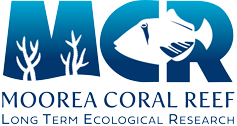Year:
2023
Authors:
Source:
Ph.D. Dissertation
Abstract:
Coral reefs harbor high biodiversity and support the livelihoods of millions of people
worldwide. Yet they, like numerous other ecosystems, can undergo large shifts in species
composition to a less desirable state, such as a shift from coral dominance to macroalgal
dominance. These shifts in the benthos can reverberate throughout the system, influencing the
reef fishes that play an important role in the ecology of the ecosystem and in the economy of
local communities. Previously, spatial heterogeneity and the arrangement of physical reef
structure that reef organisms use for habitat has not been adequately considered in these
dynamics, in part due to the difficulty in collecting the necessary spatial data in the subtidal
marine environment. This research harnesses recent advances in computer vision and
photogrammetry to address these knowledge gaps about the spatial ecology and benthic state
shifts of coral reef ecosystems. The first aspect of this study involved the development of a
novel methodology to conduct paired, georeferenced fish and benthic surveys in shallow coral
reef systems. The increased efficiency of having one researcher conduct both surveys
simultaneously allows much greater area to be surveyed, while maintaining high spatial
resolution in the data. To process the large volume of data collected, benthic photographs were
automatically annotated using the machine learning algorithm, CoralNet. At the scale of a one
minute transect segment (roughly 10 m in length representing 50 m2 surveyed), the computer
vision algorithm provided more accurate estimates of the percent cover of benthic organisms
than expert human annotators due to its ability to process many more photographs per segment.
Using this methodology, the fish and benthic communities the lagoons of Moorea, French
Polynesia were surveyed in 2018 and different locations were surveyed again in 2019. The 2018
surveys were used to construct models to determine whether coral reef fishes were more
x
associated with static (e.g., location in the reef, depth, availability of physical structure) or
dynamic (e.g., coral versus macroalgal cover) environmental variables. The performance of
these models was tested using the new data collected in 2019, and the models maintained high
predictive power. Most fish groups were influenced more by static compared to dynamic
variables, suggesting that they may be somewhat resilient to a change in the reef state over short
periods. Finally, the macroalga that is responsible for shifts in the benthic state in Moorea
lagoons, Turbinaria ornata, is resistant to herbivory but has a low propagule dispersal distance,
with most dispersal occurring < 1 m away from adults. To investigate whether the arrangement
of physical habitat influences the growth of T. ornata, individual patches of T. ornata and the
reef structure emerging from the sand (“bommies”) that they settle upon were mapped through
time. Orthomosaics, large images created from overlapping many small images while preserving
distances, were created in fifteen sites within the lagoon of Moorea in 2019 and again in 2021,
and the amount of T. ornata on each bommie was recorded in both years. T. ornata remained
highly stable through over two years, with little change in its cover over time, but there was
evidence that most of the change in the area occupied by T. ornata was driven along edges of
established patches, rather than through long distance dispersal across bommies. However, this
study appeared to capture a time period when T. ornata switched from expanding to contracting
across the lagoon, therefore a longer timescale (greater than two years) would be needed to fully
understand these dynamics. Taken together, this research utilizes novel methodological
advances to provide new insights into how coral reef ecosystems are structured spatially in a
heterogenous environment and provides a foundation for further studies focused on the spatial
dynamics of phase shifts in these systems. This can increase understanding and predictive ability
as we try to manage coral reefs in a changing environment.
Publication Type:
Thesis or Dissertation
Publisher:
Florida State University



